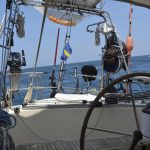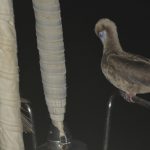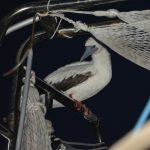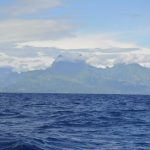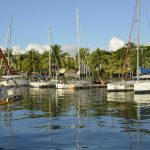French Polynesia
Tahiti
After some well-earned rest in Papetee marina it was time to move on, again. Tahiti and Papetee was a pleasant stay with friendly people. The city offered everything we needed as well as for Peach. Basically only one problem. We had decided to get new antifouling and to let the wharf in Papetee do the work. Unfortunately we had to turn their offer down when they asked for 5 000 US to do this rather simple work on our 38 feet yacht. A horrible price according to us. Thankfully it was very little growth on the hull west of Tahiti, compared to the situation in the Caribbean waters and around Panama and Galapagos. We decided to wait until absolutely necessary. The air compressor we purchased in Las Palmas make it simple for us to clean the hull temporarily when needed.
In the marina we met many fellow sailors and had a nice time spending time with all of 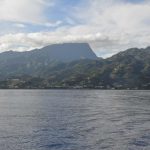 them.
them. 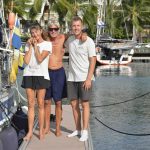 In particular we spent quality time with Rasmus on Dies Natalie.
In particular we spent quality time with Rasmus on Dies Natalie.
When it was time to leave we got our self the necessary inter-cruising permit and took off for Moorea, a stone throw from Tahiti as the first stop on our way west.
Moorea
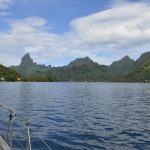 A nice island with a spectacular view. There are two bays on the north side which give good shelter, Baie de Cook and Baie de D’Opunohu. We stayed in the Cook bay for a couple of days at anchor on 25 meter. Being that far out, we were practically alone when most of the neighboring yachts anchored in more shallow water. Although the island was pretty and the surroundings spectacular we did not feel that we wanted to stay more than a few days. Maybe because we had Bora Bora to much in our minds when that island was our current focus. We had also read about thefts on yachts when the crew was not on board.
A nice island with a spectacular view. There are two bays on the north side which give good shelter, Baie de Cook and Baie de D’Opunohu. We stayed in the Cook bay for a couple of days at anchor on 25 meter. Being that far out, we were practically alone when most of the neighboring yachts anchored in more shallow water. Although the island was pretty and the surroundings spectacular we did not feel that we wanted to stay more than a few days. Maybe because we had Bora Bora to much in our minds when that island was our current focus. We had also read about thefts on yachts when the crew was not on board.
Huahini Hui
We left Moorea late in the afternoon for a night sailing to Bora Bora
via some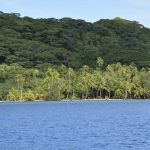 neighboring islands on the way. We arrived to Huahihi Hui early in the morning and sailed through the reef passage, Passe Avapehi, which was simple enough. The west side of the island offered several good and sheltered places to stay. We decided to go to the big bay, Potr Bourayne, where we anchored in the southwest corner at 20 meters. We stayed several days when we felt at peace in the bay. We were only two yachts in the corner with enough distance between us. The water was crystal clear and no disturbing wind at all. It was a really quiet place. We recommend a visit to the island if you are sailing in the neighborhood. We felt both safe and secure on the island.
neighboring islands on the way. We arrived to Huahihi Hui early in the morning and sailed through the reef passage, Passe Avapehi, which was simple enough. The west side of the island offered several good and sheltered places to stay. We decided to go to the big bay, Potr Bourayne, where we anchored in the southwest corner at 20 meters. We stayed several days when we felt at peace in the bay. We were only two yachts in the corner with enough distance between us. The water was crystal clear and no disturbing wind at all. It was a really quiet place. We recommend a visit to the island if you are sailing in the neighborhood. We felt both safe and secure on the island.
Ile Tahaa
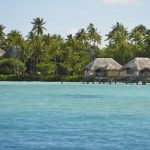 Our next stop was only 22 miles away towards Bora Bora. We decided to visit Tahaa after we had studied the sea chart closely. Several nice anchorages were indicated. We entered the island through Passe Toahotu on the east side of the island. The passage was well marked while it was no problem to sail through and continue to sail on the inside of the reef further north. We had decided to drop anchor at Coral Garden, a small resort on the west side. We did that and this place turned out to be one of the nicest anchorages so far. We stayed for many days and relaxed, inflated and used our kayak and did a lot of snorkeling among beautiful coral fish.
Our next stop was only 22 miles away towards Bora Bora. We decided to visit Tahaa after we had studied the sea chart closely. Several nice anchorages were indicated. We entered the island through Passe Toahotu on the east side of the island. The passage was well marked while it was no problem to sail through and continue to sail on the inside of the reef further north. We had decided to drop anchor at Coral Garden, a small resort on the west side. We did that and this place turned out to be one of the nicest anchorages so far. We stayed for many days and relaxed, inflated and used our kayak and did a lot of snorkeling among beautiful coral fish.
Bora Bora
After Tahaa it was finally time for Bora Bora. Many says it is the
most specular island in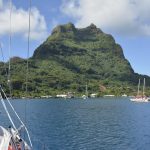 the Pacific. Maybe they are correct. It was spectacular but to tell you the truth (our truth) we have seen other islands as spectacular as this one. Anyway, it felt good to be here at last. We took a mooring buoy north of the town center although other places around the island might have been more scenic. Unfortunately many anchorage areas have been occupied by mooring buoys and anchoring has been somewhat restricted, probably due to a lot of visiting yachts.
the Pacific. Maybe they are correct. It was spectacular but to tell you the truth (our truth) we have seen other islands as spectacular as this one. Anyway, it felt good to be here at last. We took a mooring buoy north of the town center although other places around the island might have been more scenic. Unfortunately many anchorage areas have been occupied by mooring buoys and anchoring has been somewhat restricted, probably due to a lot of visiting yachts.
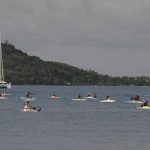 While we were there, a kajak race was going on. Fascinating to see all these people in their kajaks struggling against the tide. On our trip around the islands we had seen that kajaking and racing is very popular.
While we were there, a kajak race was going on. Fascinating to see all these people in their kajaks struggling against the tide. On our trip around the islands we had seen that kajaking and racing is very popular.
It was ok to be close to the town when it was easy to take the dinghy to shore and get the supplies we needed after so many days of anchoring without access to food shops or vegetable markets. Even if we were in the vicinity of the town the water was clear and we had a good time bathing and swimming. Unfortunately it started to rain after a couple of days and it kept on raining for almost a week. It might had have something to do with the huge mountain close to us. Still, we enjoyed our stay! That the island is popular was clearly noted from all the big cruising ships arriving and staying for a few days. All these people on board were ferried to shore and probably directed to the tourist shops in the town. We saw many shops selling beautiful black pearls and of course other beautiful items typical for the Pacific area.
After more than a week it was time to leave. We were getting tired of the rain, we had all the supplies we needed and we had filled our diesel tanks with tax free fuel which was possible in French Polynesia in conjunction with clearing out of the country.
Cook Islands
The plan was to sail to Suwarrow, one of the most northern islands of the Cook Islands, a distance of more than 600 miles. After a visit and a few days rest on the island our plan was to continue to Samoa Islands. This would require good wind most of the journey especially when no fuel could be purchased on Suwarrow and we would still be having more than 400 miles to Samoa Islands. It turned out that we had no wind at all despite the wind in the weather report. We needed to use the engine for about 300 miles until we noted that reaching the island only by engine was not possible and no wind were predicted for several days. Instead we had to change our minds and turn towards an island we could reach with the use of our engine.
Change of destination
We settled for Aitutaki further south at a distance of 300 more miles from our position. Still no wind which was the case more or less all the way. After arrival we planned to anchor outside the village on the west side of the island. It did not look inviting when it was no beach but lots of coral reefs and rocks. We tried to hail the customs but did not get any replay. The narrow channel into the village had a depth of maximum 1.90 m which we considered to shallow and the small area just outside the village had only room for a few, small yachts according to the pilot we used. What to do? Well, we simply took of and did a night sailing, first motoring and then sailing, to the main Island Rarotonga, another 125 miles south of Aitutaki. As it turned out, we ended up 500 miles south of our planned destination!
Rarotonga
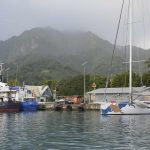 Although it was not planned but still nice to be here. The town, Avatiu, was on the north side which was good when the wind finally arrived. We hailed the Authorities before and after we have entered the tiny harbour but did not get any answer. We knew we were not allowed to go on shore why we tied us to a big cat anchored in the middle of the harbor. It was not space enough for two yachts at anchor in the tiny harbor. We learned later that the day we arrived was a public holiday and no one was working. Anyway, the day after we got in contact with the Port Captain who notified the Authorities to come on board to carry out the clearance into Rarotonga. They were very friendly and the matter was carried out quickly and we could remove the Q-flag.
Although it was not planned but still nice to be here. The town, Avatiu, was on the north side which was good when the wind finally arrived. We hailed the Authorities before and after we have entered the tiny harbour but did not get any answer. We knew we were not allowed to go on shore why we tied us to a big cat anchored in the middle of the harbor. It was not space enough for two yachts at anchor in the tiny harbor. We learned later that the day we arrived was a public holiday and no one was working. Anyway, the day after we got in contact with the Port Captain who notified the Authorities to come on board to carry out the clearance into Rarotonga. They were very friendly and the matter was carried out quickly and we could remove the Q-flag.
We were told to stay at the dock/pier, Mediterranean style, with our stern towards the dock which was made of stone and huge. We used our CQR-bow anchor to keep a distance. We had a space of 3-4 meters from the dock not to bump into it when the tide was strong. We were lucky that the wind was weak during our first days when the basin was open towards the sea and with strong wind from north it was recommended to leave the harbor. Well, the strong wind arrived a few days later but we stayed and with assistance from port staff we could drop our log anchor, which we call our cyclone anchor. With the help of that anchor we were perfectly safe although it was bumpy. A neighboring yacht actually smashed into the dock with a damaged stern as a result.
If you go there, be aware of that no electricity or water is provided.
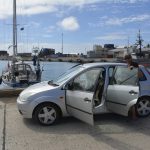 The stay was nice enough, despite the bumpy water, with friendly people. We actually came into contact with a Swede who had been on the island for more than 30 years, taking care of his business, a printing company, he took us around the island in his car and we had a great time.
The stay was nice enough, despite the bumpy water, with friendly people. We actually came into contact with a Swede who had been on the island for more than 30 years, taking care of his business, a printing company, he took us around the island in his car and we had a great time.
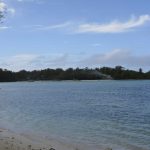 It was clear that we were on a very south parallel when it was chilly during the evenings. A peculiar thing to say by two Swedes accustomed to colder weather. We had got used to really hot weather and we were eager to turn north towards Fiji perhaps via Tonga. We bring good memories from Rarotonga but hope that the Port Authorities put some money in developing the harbor suitable also for small crafts.
It was clear that we were on a very south parallel when it was chilly during the evenings. A peculiar thing to say by two Swedes accustomed to colder weather. We had got used to really hot weather and we were eager to turn north towards Fiji perhaps via Tonga. We bring good memories from Rarotonga but hope that the Port Authorities put some money in developing the harbor suitable also for small crafts.
Fiji
The distance from Rarotonga to Fiji was 1 200 miles, to Tonga approx. 800 miles and to Niue around 600 miles. We had planned to stop at both Niue and Tonga on our way but the sailing was so good that we decided just to move on. Mostly the wind was around 20-24 knots which was perfect. South of Niue and northwest of Tonga we faced 30 knots for about 30 hours in total but with proper amount of sail, Peach behaved nicely and it was just to let go and let her do the work she is built for.
We sailed together with another yacht up to Niue but that sailing yacht got problems with the autopilot why we came apart 12 hours from the island. We did however help out by sending e-mails via our SSB to a friend of the vessel in order to speed up the shipment of spare parts to Niue. We later came together in Savusavu, Fiji, for a short while before we left for Vanuatu.
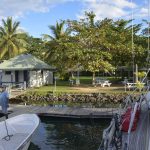 We arrived to Vanua Levu, Savusavu, after 10 days at sea. Being so many days at sea we always find the routine for sleep and watch-keeping. It works very well.
We arrived to Vanua Levu, Savusavu, after 10 days at sea. Being so many days at sea we always find the routine for sleep and watch-keeping. It works very well.
In Savusavu we were docked at Copra Shed Marina which was a great place to be. We actually arrived only three hours before the time we had said in the pre-notification we provided Fiji customs with from Rarotonga via mail. Not bad after a journey of 1 200 miles. Nice people, lovely environment and decent prices in the marina as well as in the restaurants close by. As Europeans it is also nice to get 240 V and 50 Hz. The water was drinkable although we used a carbon filter before letting the water in to our tank. This for getting rid of chlorine. We use tank water to flush the water-maker and the membrane does not go well with chlorine.
Speaking of membrane we discovered that the oil in our compass was escaping due to a crack in that membrane. To get a new membrane was not possible why we has removed the large cockpit-compass and store it upside down until we can get a new membrane.
We took a “vacation” flight to Suva, the capital of Fiji and spent a few days there looking into some chandleries searching for boat stuff. It turned out we did not need anything, except for the compass membrane which we knew we could not get in the city. Well, we bought the carbon filter including the compartment for the filter and nothing else, which was the first time we did not have any great need for additional spare parts other than those stored on board.
The Fiji archipelago is beautiful and to properly visit all nice places would take at least a whole season, probably longer. We however were on route why we settled with our rather short stay and wanted to move on. The plan was to continue to New Caledonia but sailing friends told us that we must visit Vanuatu why we change our minds and set course for Vanuatu instead, 700 miles from Fiji.
Vanuatu
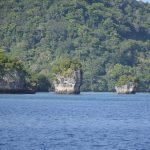 Arriving at Port Vila on Efate Island early in the morning after
Arriving at Port Vila on Efate Island early in the morning after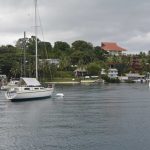 good, normal sailing. We have been rather skilled at calculating and adjust arrival time not to approach in the dark. Based on what friends have told us we looked forward to explore Vanuatu.
good, normal sailing. We have been rather skilled at calculating and adjust arrival time not to approach in the dark. Based on what friends have told us we looked forward to explore Vanuatu.
We left Port Vila after a couple of days and sailed north, still around Efate. Due to strong trade winds it was necessary to find sheltered water for comfortable anchoring. Still, there were a lot of nice places to visit. We first went to Esema Bay on the northwest side of Efate and stayed there longer than planned. It was quiet, no other yachts and very sheltered in the northeast corner of the bay.
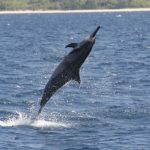 On our way we met a large family of dolphins. They acted crazy and our guess was that they tried to impress on each other. They jumped very high and spinned around at the same time. Obviously trying to make a show out of it.
On our way we met a large family of dolphins. They acted crazy and our guess was that they tried to impress on each other. They jumped very high and spinned around at the same time. Obviously trying to make a show out of it.
Every day we had locals visiting us offering vegetables for sale. Some also asked for 2-stroke oil when they had the petrol but no oil. We helped out as much as we could.
One morning we saw a large rowing bot with 6 small children with parents. We hailed them and handed over presents to the children. Presents we had bought in Sweden just for this purpose. At the same time we told the father that it is some large fish swimming under Peach and in the neighborhood. He said that he does not have any fishing gear at all why we gave him fishing lines and some good hooks. They were happy for the presents. In the afternoon they came back with a lot of vegetables, something we had not expected but warmly welcomed.
For the next leg we wanted to check the Palao Bay on the north side of Efate. We have heard that the bay offered shelter as well as a nice beach. Well, when we arrived we had wind of 28 knots why we turned back, catched a nice barracuda on the way and just regarded the day as “a nice day of sailing”. The strong wind in the northern bay was probably due to that the wind accelerated somehow around the northeast corner of Efate. Well back in Esema Bay, the barracuda was prepared for dinner and it was delicious (and lasted for additional two meals).
We agreed on a night sailing and set course for the island Epi at 21.00 in the evening. The distance was around 55 miles to a very small bay on the west coast by the name of Revolieu Bay where we planned to stay a day or two. However, on our way north we were hailed by 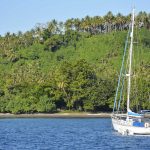 another yacht going south, coming from the bay. The captain recommended us to continue a little further north to Lamen Bay which he said was much better. We followed that recommendation and he was probably correct. We anchored in black sand at a depth of 6-7 meters. It is a really nice bay, with a small village with friendly people, an airport, a school and a few small shops where we could buy some things just for the fun of it. The Captain was actually looking for beer but that was sold out and next delivery was planned for next week.
another yacht going south, coming from the bay. The captain recommended us to continue a little further north to Lamen Bay which he said was much better. We followed that recommendation and he was probably correct. We anchored in black sand at a depth of 6-7 meters. It is a really nice bay, with a small village with friendly people, an airport, a school and a few small shops where we could buy some things just for the fun of it. The Captain was actually looking for beer but that was sold out and next delivery was planned for next week.
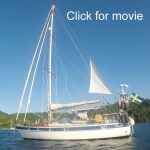 We had some plans to continue north and look at those islands but the weather report told us about very strong winds for more than a week why we went back to Efate and anchored in Esame Bay as far north as possible. No other yachts but Peach. Now we are back in Port Vila doing maintenance and preparations for the journey to New Caledonia and further Brisbane.
We had some plans to continue north and look at those islands but the weather report told us about very strong winds for more than a week why we went back to Efate and anchored in Esame Bay as far north as possible. No other yachts but Peach. Now we are back in Port Vila doing maintenance and preparations for the journey to New Caledonia and further Brisbane.
By the way, we have noted that Marinetraffic does not keep up with or journey which probably is because there are no land based stations in this area. We have finally solved this problem by using an app that send our position to Marinetraffic on a regular basis. As far as we know we should, currently, be positioned in Port Vila.
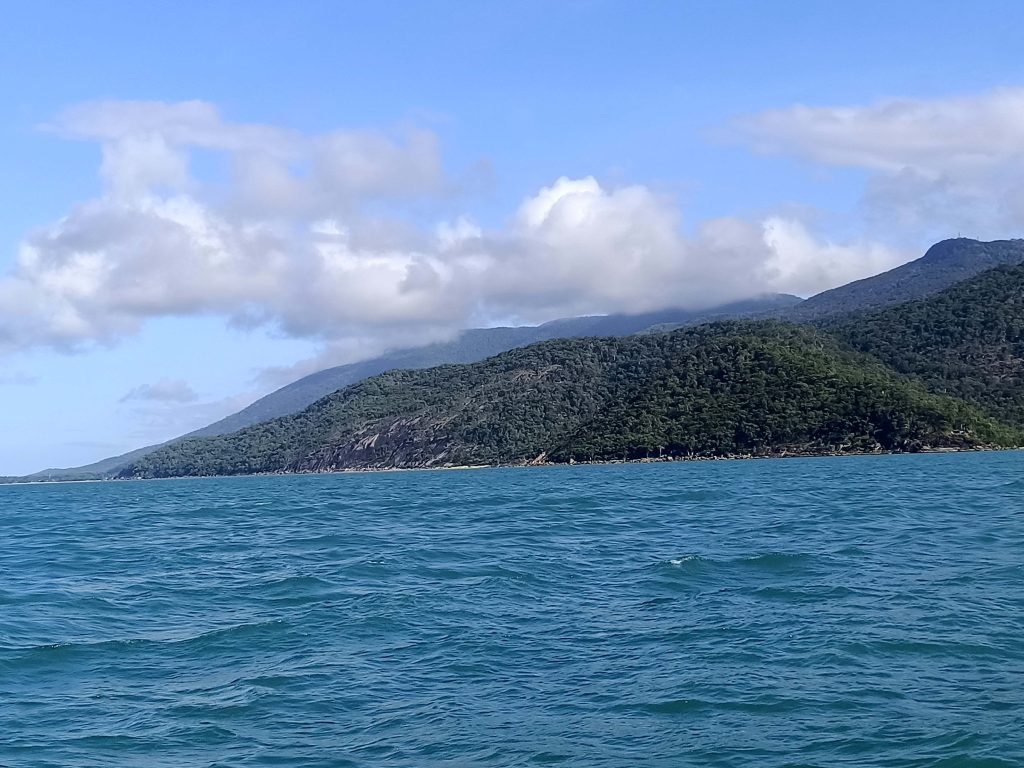
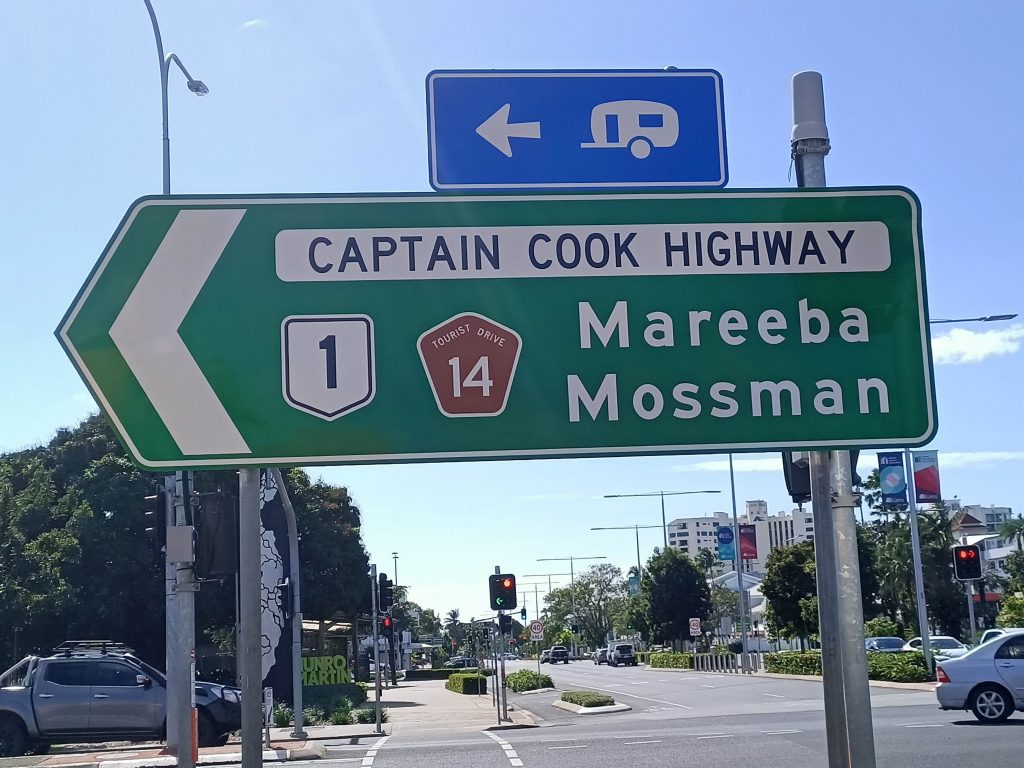
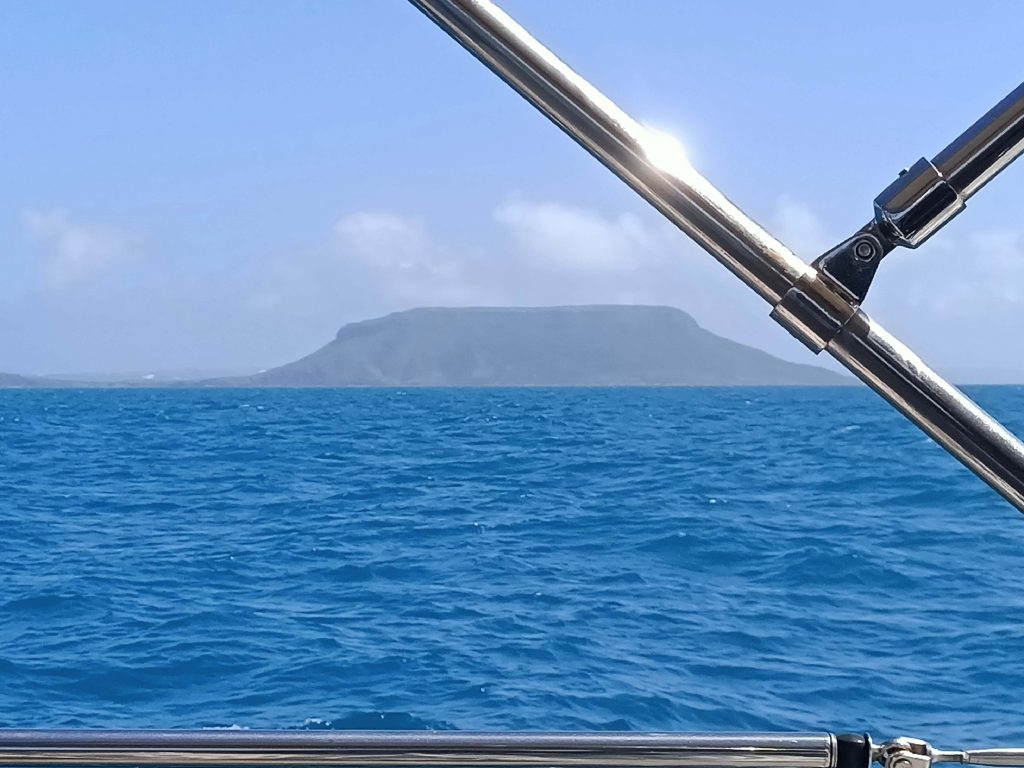
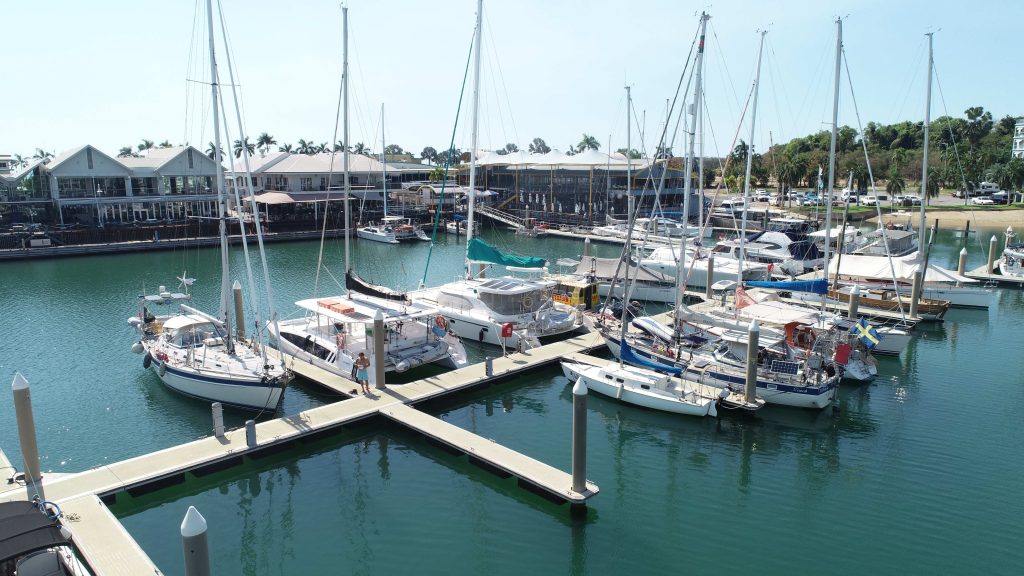
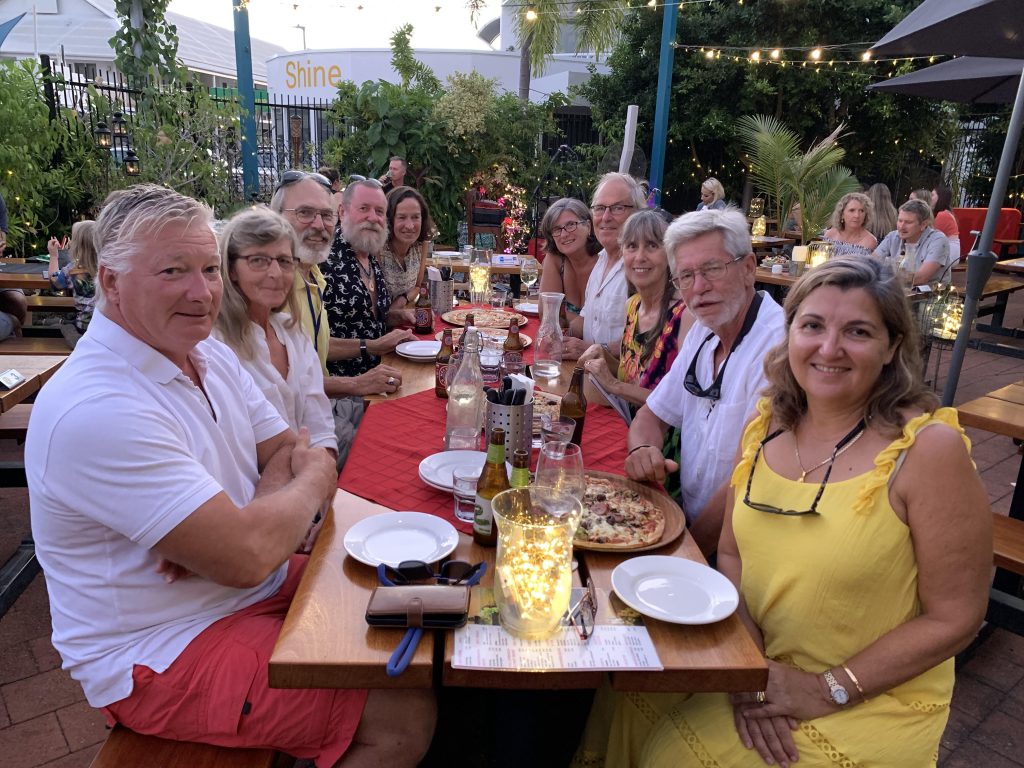

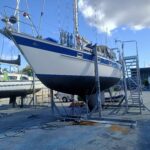
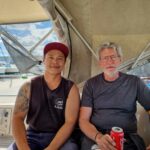
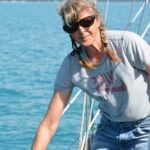 To get to the bay we had to pass a large sandbank and all looked great and “no worries” as they say here. Unfortunately the wind increased to 20 knots under our approach and there was no escape. Immediately huge breaking waves came from behind and from nowhere. We managed two slide through 2 big one’s but we didn´t escape the third one. It came down over Peach and us. We probable got a couple of busloads of water in the cockpit, and over us and with one hatch open we managed to get seawater in the galley and on the cabin sole. We estimated at least 30 cm of seawater in the cockpit which luckily disappeared quickly through the self-bailers. We spent a day in pelican Bay, not directly relaxing, but instead taking care of the effects from the breaking wave. Since the major reason for going into the Bay was to try to fix the AIS which was unsuccessful, the adventure could have been avoided…
To get to the bay we had to pass a large sandbank and all looked great and “no worries” as they say here. Unfortunately the wind increased to 20 knots under our approach and there was no escape. Immediately huge breaking waves came from behind and from nowhere. We managed two slide through 2 big one’s but we didn´t escape the third one. It came down over Peach and us. We probable got a couple of busloads of water in the cockpit, and over us and with one hatch open we managed to get seawater in the galley and on the cabin sole. We estimated at least 30 cm of seawater in the cockpit which luckily disappeared quickly through the self-bailers. We spent a day in pelican Bay, not directly relaxing, but instead taking care of the effects from the breaking wave. Since the major reason for going into the Bay was to try to fix the AIS which was unsuccessful, the adventure could have been avoided…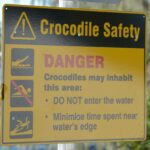 In Gladstone we came realized that
In Gladstone we came realized that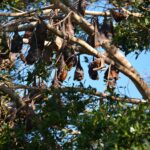




 In particular we spent quality time with Rasmus on Dies Natalie.
In particular we spent quality time with Rasmus on Dies Natalie.













